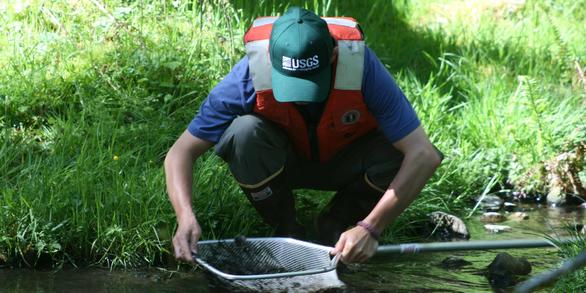Forest and Rangeland Ecosystem Science Center
Home
Scientists from the Forest and Rangeland Ecosystem Science Center capitalize on their diverse expertise to answer scientific questions shaped by the environments of the western United States. We collaborate with each other and with partners to provide rigorous, objective, and timely information and guidance for the management and conservation of biological systems in the West and worldwide.
FRESC Research Teams
FRESC scientists, individually or collaboratively with partners, investigate high-priority questions about biological systems.
Learn moreNews
Annotated Bibliography of Scientific Research on Greater Sage-Grouse Published
The U.S. Geological Survey has reviewed and summarized the substantial body of literature related to the conservation, management, monitoring, and assessement of the greater sage-grouse, creating an annotated bibliography that provides easy access to sage-grouse science developed since 2015.
Estimating Turbine-Induced Bird and Bat Fatalities on Roads and Pads
Estimating wildlife mortality at wind facilities is complicated, partially because carcasses may not be detected in thick vegetation, rivers, or lakes within plot boundaries.
Diurnal Timing of Nonmigratory Movement by Birds
Birds optimize foraging either by minimizing energy loss through passive movement or by maximizing energetic gain through foraging.
Publications
Weed-suppressive bacteria effects differ in culture compared to in soils and with or without microbial competition and separation of active ingredient
Weed-suppressive bacteria (WSB), specifically the D7 and ACK55 strains of Pseudomonas fluorescens, were previously reported to selectively inhibit growth of invasive annual grasses (IAGs) that have caused severe ecosystem degradation across much of the western US. However, recent studies show highly mixed evidence for WSB effectiveness in...
Lazarus, Brynne E.; Feris, Kevin; Germino, MatthewWestern purple martin (Progne subis arboricola) occurrence on the Siuslaw National Forest, Summer 2019
The western subspecies of the purple martin (Progne subis arboricola) is currently listed as a “critically” sensitive species in four ecoregions of western Oregon: Coast Range, Klamath Mountains, West Cascades, and Willamette Valley (Oregon Department of Fish and Wildlife, 2019). Importantly distinct from the abundant and widespread eastern...
Hagar, Joan; Branch, EricComparing methods to estimate the proportion of turbine-induced bird and bat mortality in the search area under a road and pad search protocol
Estimating bird and bat mortality at wind facilities typically involves searching for carcasses on the ground near turbines. Some fraction of carcasses inevitably lie outside the search plots, and accurate mortality estimation requires accounting for those carcasses using models to extrapolate from searched to unsearched areas. Such models should...
Maurer, Joseph; Huso, Manuela; Dalthorp, Daniel; Madsen, Lisa; Fuentes, Claudio







